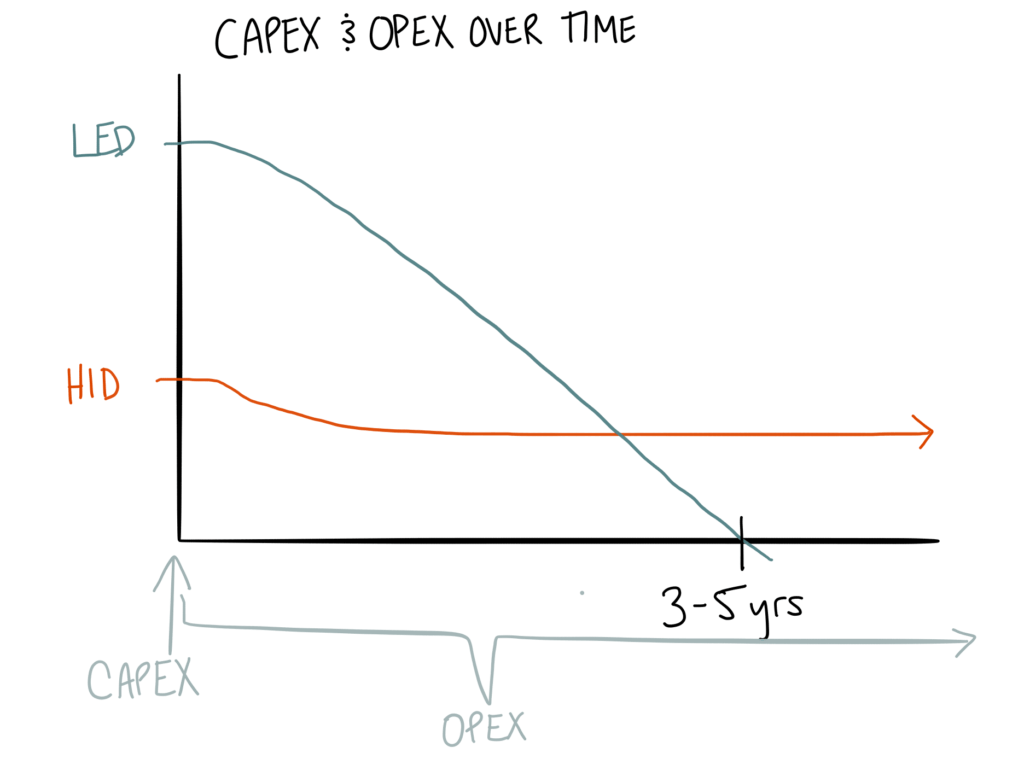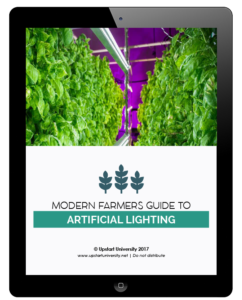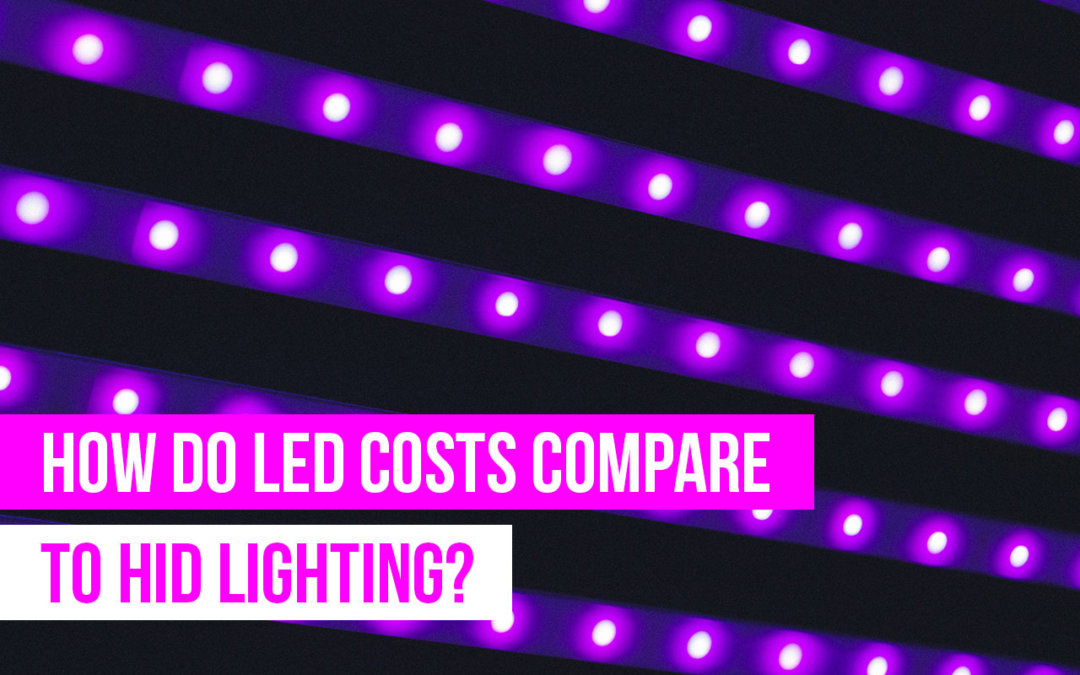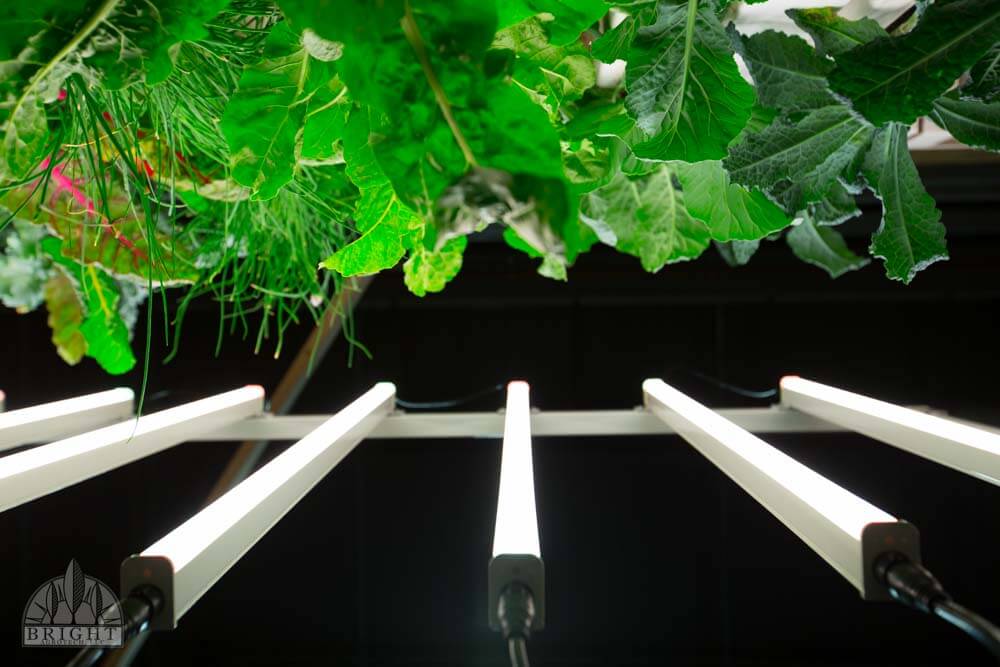With the rise of LEDs and pressure to switch from traditional HID (high-intensity discharge) lighting to LED, there’s a completely valid question about LED costs that many producers find themselves asking:
“How can I justify paying 2–5 times as much for an LED fixture as I do for an HID light?”
No one is going to dispute the fact that LED lights are pretty pricey, especially if you’re used to HID, plasma, HPS (high-pressure sodium), etc. So why do growers switch from a $100 light to a $500 dollar light?
To understand why growers are paying more for LEDs, we need to keep two concepts in mind:
1) LED prices are falling rapidly.
The price of LEDs is in flux. The industry is evolving. The starting price of LED lights vary hugely, but overall, costs are coming down very quickly. In the coming years, we can expect LEDs to be cheaper and cheaper.
2) LED costs: CapEx is higher, but OpEx is lower (enough to tip the scales)
We need to break costs down into two big types: CapEx and OpEx.
CapEx is the capital expense and refers to the money you need to get started; it includes buying the fixtures and any building modification or support equipment you need. In other words, CapEx includes one-time initial purchases and fees.
OpEx is the operational expense and includes the costs associated with running the product on a month to month (or week to week) basis. This includes electricity, replacement parts, and service fees. In other words, OpEx is the recurring costs per unit of time.
The single most important fact about LED costs is that OpEx of LEDs is usually half of the OpEx of other lighting systems.
Let’s imagine a scenario using LEDs with CapEx and OpEx.
- CapEx = $1000
- OpEx = $100 (per month)
- After 10 months, you’ve spent $2000.
Now let’s imagine a similar scenario with traditional HID lights.
- CapEx = $200
- OpEx = $200 (per month)
- After 10 months, you’ve spent $2200.
After two years of operation, the two facilities will have spent $3400 and $5000, respectively. After five years, they will have spent $7,000 and $12,000, respectively.
*The cost breakdown will obviously vary from situation to situation, but this example shows how you should be thinking about lighting costs.
The point is: CapEx is a predictable one-time expense—important in the short term, but not so much in the long term. OpEx can change from month to month and adds up over time—extremely important in the long term.
Why are growers switching to LEDs?
So, to answer the question of why growers are switching the LEDs despite the higher price tag: successful farmers pay attention to long-term costs, and the long-term costs of LEDs are so much better than for HID that it makes LEDs worth the high CapEx.
LEDs also excel in break-even point and lifetime
Of course, any good farmer knows to also think about the break-even point and lifetime of their equipment. Let’s take a look at those numbers for LEDs.
What is the break-even point of LED lighting?
When we crunch the numbers for indoor producers (given average electrical rates), we typically predict a break-even point of 3–5 years. What that means is that in 3–5 years, LED lights become cheaper than HID lights. Producers that want to grow for longer than 5 years need to be using LED lights.

How long do LEDs last?
LEDs last longer than traditional HID lights.
The big thing to know is that 50,000 hours on an LED doesn’t mean that after 50,000 hours, the light goes out; it means that after 50,000 hours they run at lower efficiency. Most LEDs have data on the efficiency of the product over time, so producers can see how quickly efficiency decreases.
A good LED light, for example, might function fully (100%) for 8 years then decrease to 95%. The lifetime of the light is 8 years, but it’s not truly dead after that time. In comparison, HID lights will need bulb replacements every few years, and once a bulb is dead, it’s completely useless for good.
Another facet of LED lifetime is the fragility of the actual product. The durability of LEDs is much higher than almost any other grow light out there; LEDs tend to be more rugged, harder to break, and easier to waterproof.
Learn whether LEDs are right for you:
 The Modern Farmer’s Guide to Artificial Lighting is our straight-forward, no-B.S. guide to help you make informed decisions about your lighting needs.
The Modern Farmer’s Guide to Artificial Lighting is our straight-forward, no-B.S. guide to help you make informed decisions about your lighting needs.
Download The Modern Farmer’s Guide to Indoor Lighting today!




I live in the Philippines and I just bought a 5wat bulb for $1.35. The price is really coming down.
A good LED grow light will pay for itself within a few years, easily. Other positives are a lower heat output and the fact you don’t have to constantly change bulbs (or deal with blown ballasts).
Although LED lights will invest more at the beginning, they will gradually recover the cost through electricity bills later. The longer they are used, the more savings will be made, and they will not generate a lot of heat.
The price of LED grow lights is declining, the advantages are becoming more and more obvious, and the heat is lower, the longer it takes, the more cost-effective